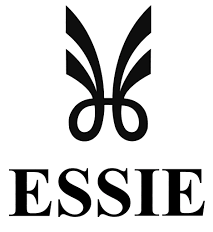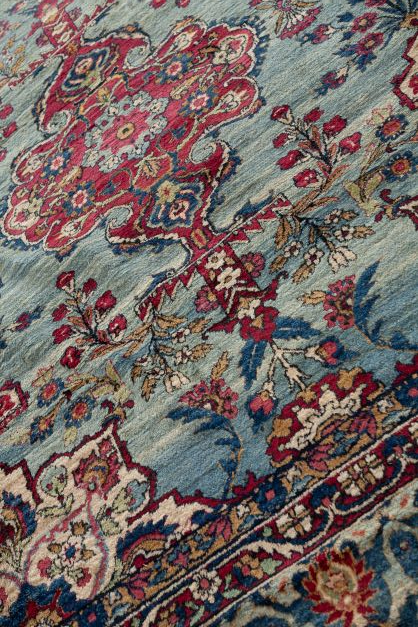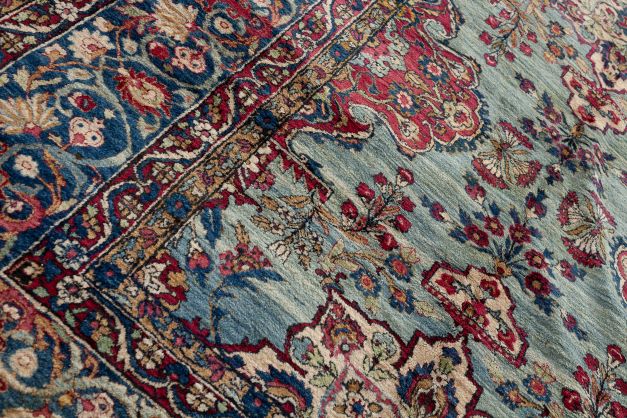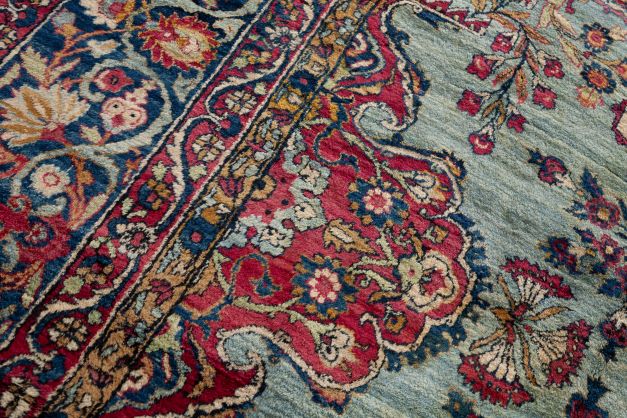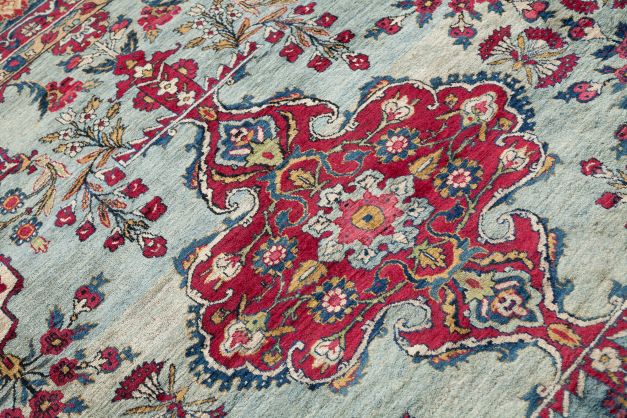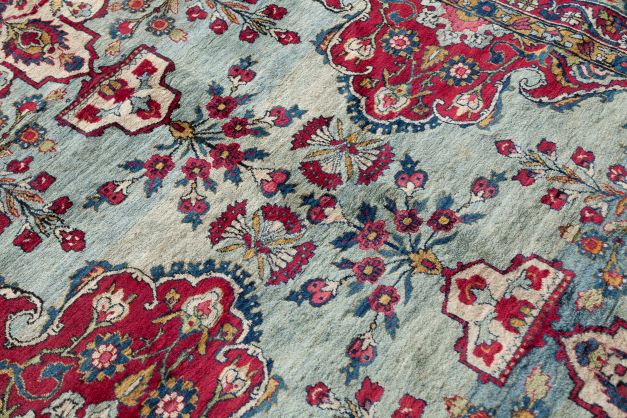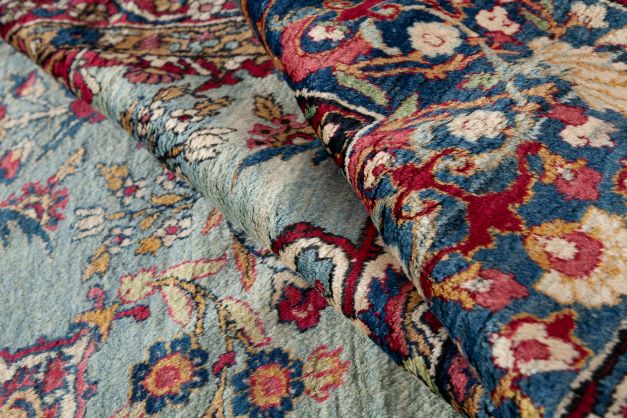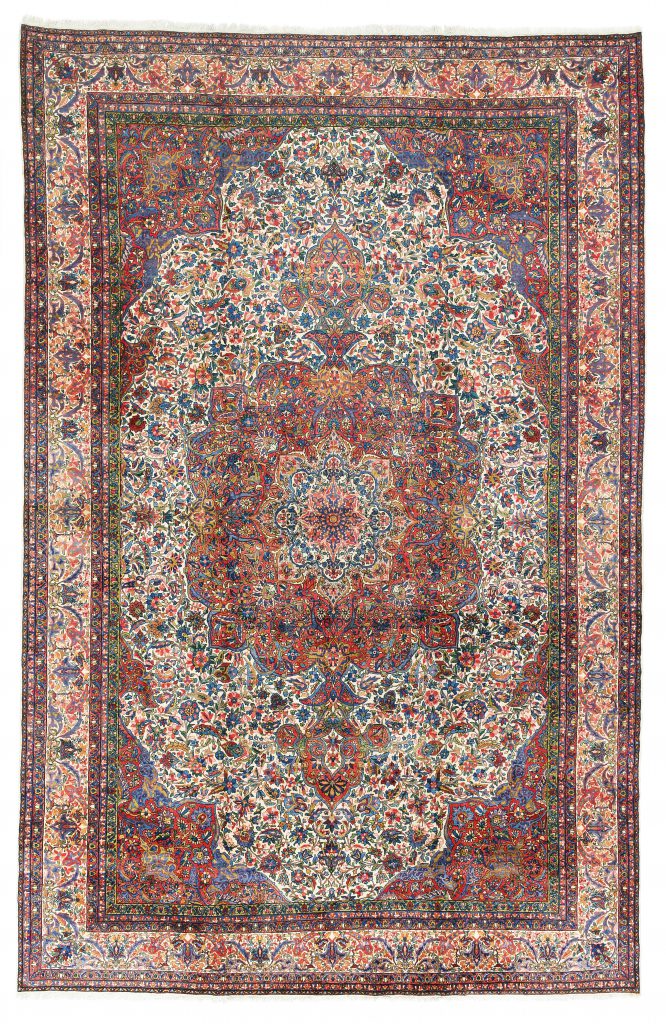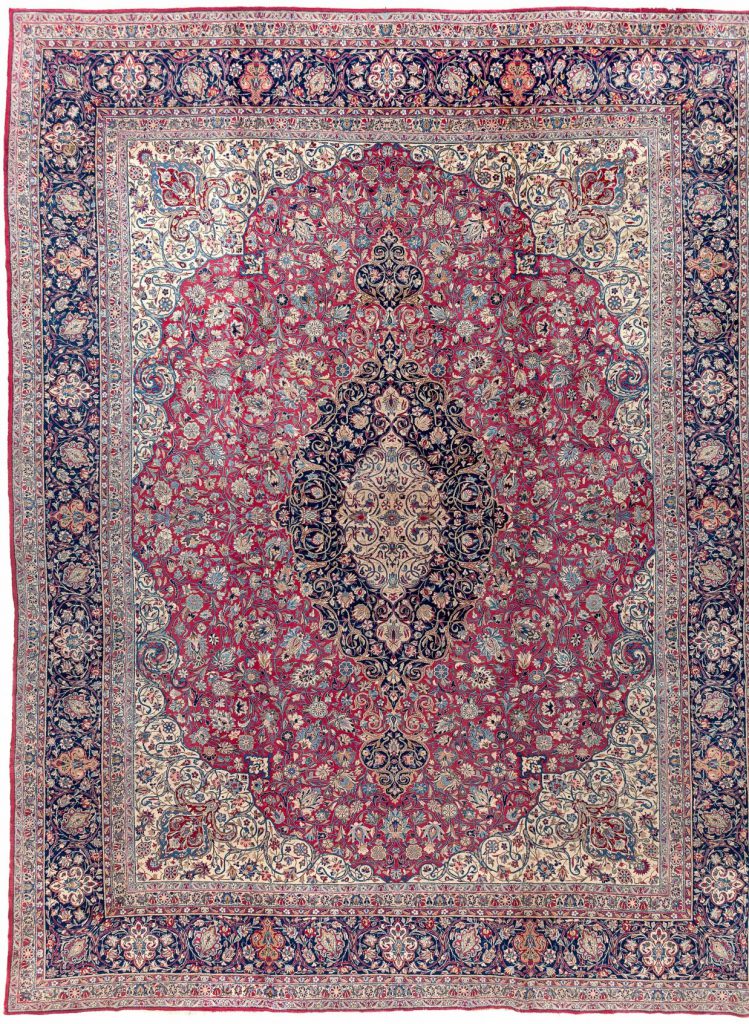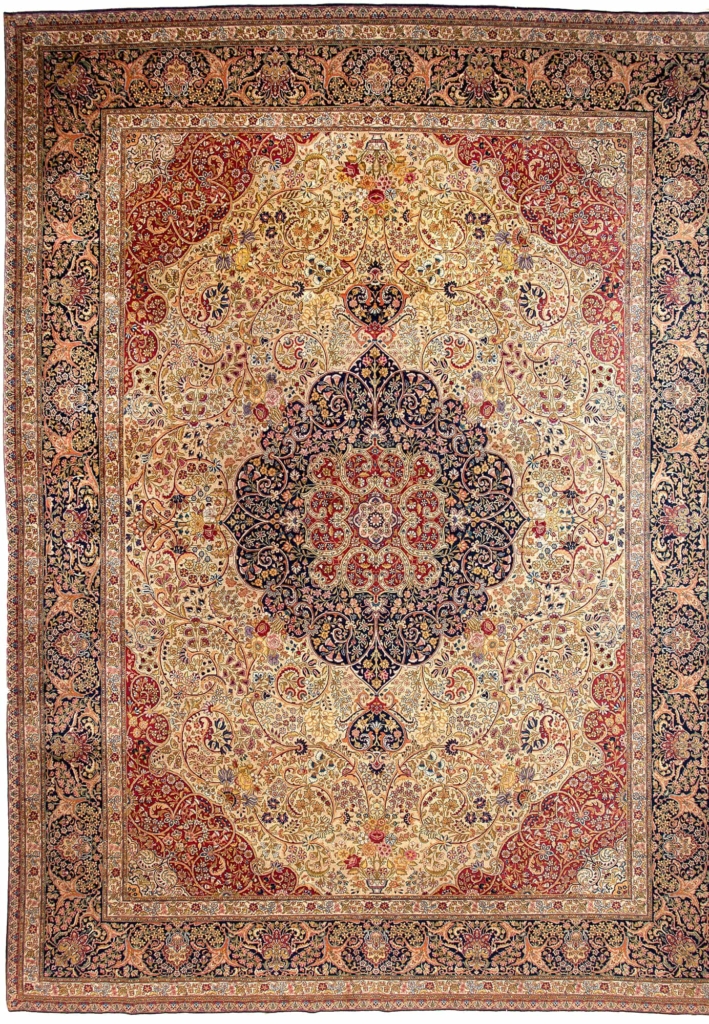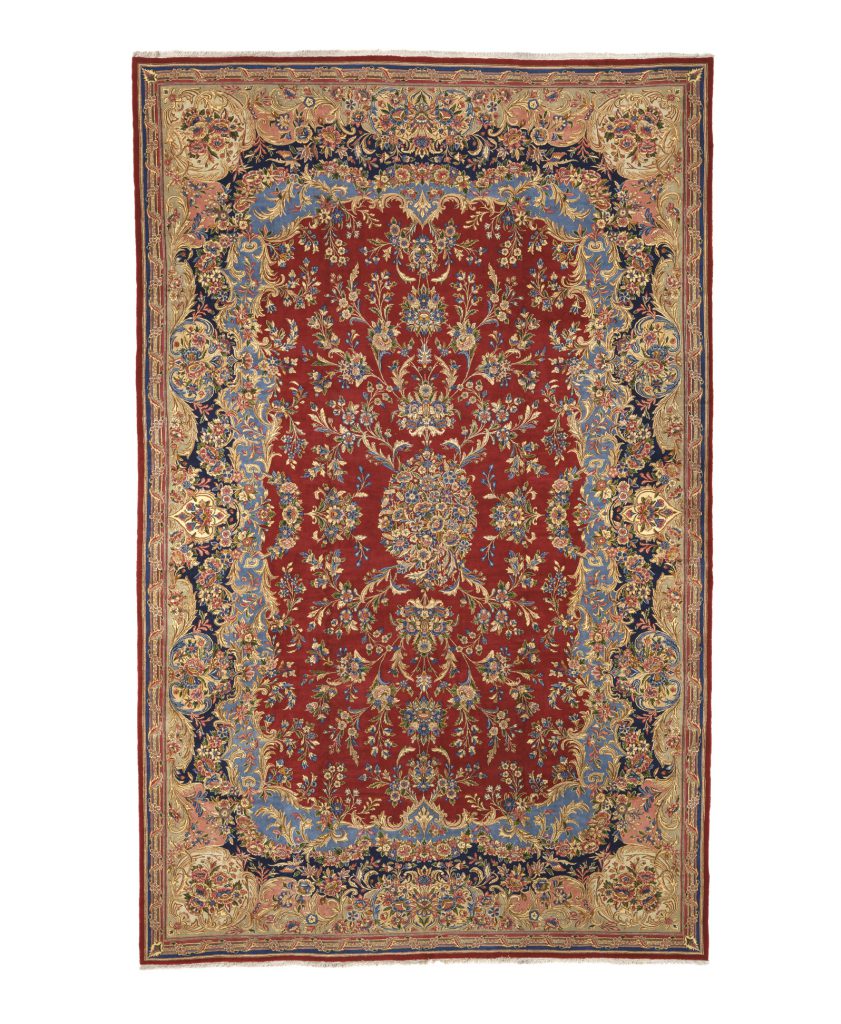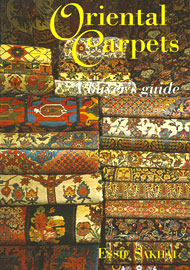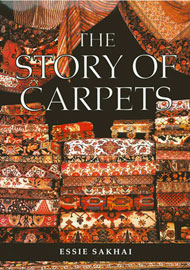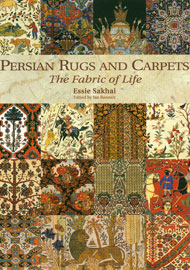Exquisite Fine Antique Kerman Carpet
Rug #2621Exquisite fine antique Kerman carpet, repeat medallions, sophisticated design, contrasting light and dark jewel like colours, soft lustrous wool
Kerman refers to both a city and a province in South Central Persia (Iran). The city itself is one of the great historic weaving centres of Persia, and is place to which one of the most distinctive groups of of late 16th and mid-17th century carpets is attributed, the so called ‘Vase’ carpets. Even though Kerman has been a centre of carpet production since the 17th century Safavid period, the golden age of carpet making from this city and surrounding town and villages including the important centre of Ravar dates from the late 1800’s. From this time the volume of textiles and carpets to European and North American markets dramatically multiplied in a short period of time, due to increased wealth across a wider audience from economic growth. A shift or revival of interest in ‘all things Eastern’ became apparent and like other urban centres of carpet production, Kerman and neighbouring villages responded accordingly and produced versatile and varied carpet designs including; medallion designs, all-over patterns, panel or diaper designs, prayer formats and pictorial compositions with or without hunting scenes, or those including figural subject matter. Carpet weaving in Kerman and in the town of Ravar had been established as a tradition long before the end of the 19th century. When Sir Percy Sykes (then Major Sykes) established the first British Consulate in command in 1895, he wrote that there were about 1000 carpet weaving looms in Kerman, 100 in Ravar, and about 30 in the surrounding villages. The earliest post- Safavid looms in the district were erected in Ravar, 100 miles North East of Kerman, dated carpets from there go back to 1866 AD. With the expansion of the carpet industry in Persia towards the end of the 19th century primarily because of demand from Europe, carpet importing firms from Britain and America established offices in Kerman. The export of Persian Kerman carpets was continuous and increased with 90% of the production going to the United States by the 1930s. For a more detailed survey see , Edwards, A.Cecil; The Ravar has long been the origin of some of the finest of Persian Kerman handmade carpets. The historical explanation appears to be that as a result the late 17th Century conflicts associated with regional feuding Khans, much of Kerman was destroyed and a large part of the population, among them many highly skilled carpet Ustaden and equally skilled carpet weavers, fled to the neighbouring town of Ravar where workshops became established over time. Although the weavings are characteristic of Kerman, the high quality carpets produced in Ravar soon gained recognition and significance in the ‘Revival’ of the Persian carpet industry with carpet designs and subject matter recalling the ‘Golden Age’ of woven art, synonymous with 17th Century Safavid Dynasty ( 1502-1736 ), royal patronage. Characteristic of the ‘Revival’ also saw the emergence of varying subject matter, which include a range of varying pictorial rugs, with detailed depictions of people, and animal scenes, often a mixture of both, woven with great detail and fineness associated with the established handmade Kerman carpet tradition of excellence in technical excellence and visual impact.
For further information please contact us and our team will be pleased to assist you. All pieces in the collection are under the auspices of Essie Sakhai, one of the world’s foremost experts and collectors of fine handmade Persian rugs and carpets.

Delivery
Delivery
Enjoy Complimentary Express Delivery at Checkout
Free express next-day delivery on all UK orders.
Free express delivery on all international orders above £2,000.
Estimated Delivery Times
Please allow between 1-3 days for UK, Europe and United States destinations and 5-7 days for Far East, South America, Middle East destinations.
Please note that orders placed after 12pm (UK time), on the weekend, or during holidays will be processed on the following business day. You will be provided with a shipping tracking number once your order has been shipped.
Collection from our Mayfair London showrooms
In-store collection will be ready within 1 business day. To collect in-store you will be required to show confirmation e-mail, official photo ID (passport or driving license) and the payment card used for the order. If someone else is collecting on your behalf, please make sure they bring a letter of authorisation that permits this person to collect on your behalf, official photo ID of the purchaser and of the person collecting and confirmation e-mail.

Exchanges
Exchanges
Essie Carpets offers clients a lifetime exchange service on any items purchased from us should you wish to change your carpets at any time in the future, subject to the item being in good condition; this can be particularly useful when redecorating your home, or when an upgrade in type or quality is desired.

Payment
Payment
Payments are accepted via credit card or debit card with a valid billing and shipping address*. Accepted credit cards are Visa, American Express, and Mastercard. When placing an order, your billing address must correspond to the address of your credit card, or we will not be able to process your order.
Bank Transfers are also accepted; in order to pay by Bank Transfer, please contact our Client Services via telephone at +44 20 7493 7766 or e-mail at sales@essiecarpets.com.
All transactions are secured. The Essie Carpets website is provided with an SSL encryption system to protect personal and payment data.
Similar Carpets
-
 Fine Elegant Persian Kerman Carpet 620 x 400 cm
Fine Elegant Persian Kerman Carpet 620 x 400 cmRug #5267 Fine Elegant Persian Kerman Carpet POA
Fine Elegant Persian Kerman Carpet
-
 Magnificent Persian Kerman Carpet - Fine Wool - Oversize 423 x 325 cm
Magnificent Persian Kerman Carpet - Fine Wool - Oversize 423 x 325 cmRug #2580 Magnificent Persian Kerman Carpet - Fine Wool - Oversize POA
Magnificent Persian Kerman Carpet – Fine Wool – Oversize
-
 Ravar Kerman Extra Large Carpet 571 x 382 cm
Ravar Kerman Extra Large Carpet 571 x 382 cmRug #5046 Ravar Kerman Extra Large Carpet POA
Ravar Kerman Extra Large Carpet
-
 Fine Old Persian Kerman Carpet 370 x 265 cm
Fine Old Persian Kerman Carpet 370 x 265 cmRug #2017 Fine Old Persian Kerman Carpet POA
Fine Old Persian Kerman Carpet
-
 Very Fine Ravar Kerman Carpet 450 x 330 cm
Very Fine Ravar Kerman Carpet 450 x 330 cmRug #1928 Very Fine Ravar Kerman Carpet POA
Very Fine Ravar Kerman Carpet
-
 Fine Majestic Persian Kerman Carpet 562 x 422 cm
Fine Majestic Persian Kerman Carpet 562 x 422 cmRug #5270 Fine Majestic Persian Kerman Carpet POA
Fine Majestic Persian Kerman Carpet
